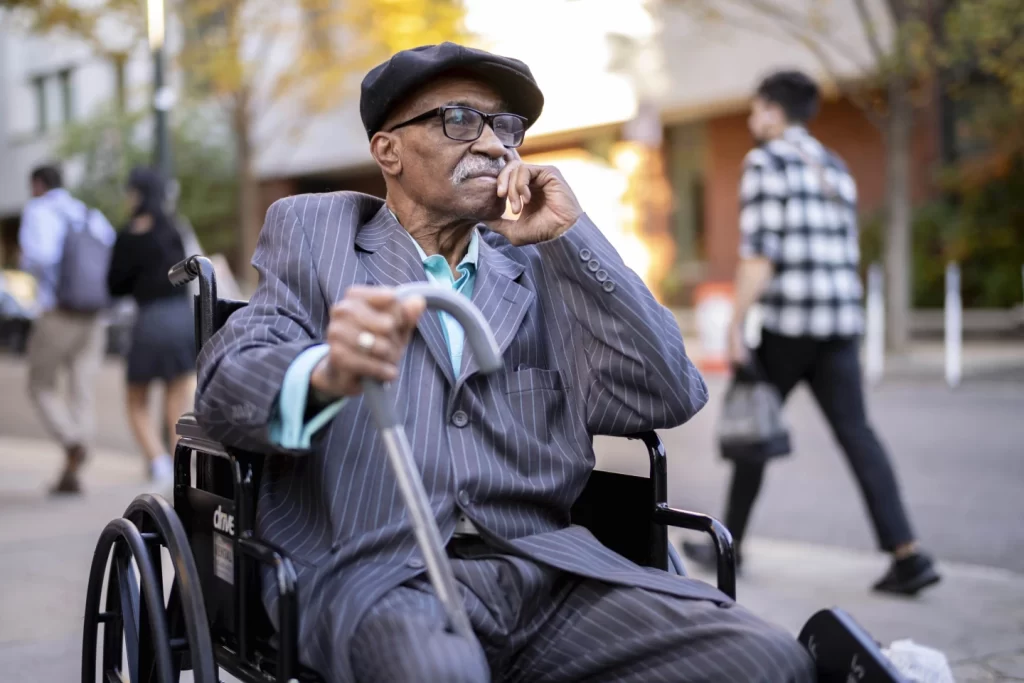
PHILADELPHIA — Fifty years ago, Philadelphia prison officials ended a medical testing program that had allowed an Ivy League researcher to conduct human testing on incarcerated people, many of them Black, for decades. Now, survivors of the program and their descendants want reparations.
Thousands of people at Holmesburg Prison were exposed to painful skin tests, anesthesia-free surgery, harmful radiation and mind-altering drugs for research on everything from hair dye, detergent and other household goods to chemical warfare agents and dioxins. In exchange, they might receive $1-a-day in pocket change they used to buy commissary items or try to make bail.
“We were fertile ground for them people,” said Herbert Rice, a retired city worker from Philadelphia who said he has had lifelong psychiatric problems after taking an unknown drug at Holmesburg in the late 1960s that caused him to hallucinate. “It was just like dangling a carrot in front of a rabbit.”
The city and the University of Pennsylvania have issued formal apologies in recent years. Lawsuits have been mostly unsuccessful, except for a few small settlements. On Wednesday, families at a Penn law school event are set to seek reparations from the school and pharmaceutical companies that they say benefited from the Cold War-era research.
A University of Pennsylvania spokesperson said the school had no comment on the push for reparations.
The testing was led by Albert M. Kligman, a University of Pennsylvania dermatologist with research ties to the Army, the CIA and the pharmaceutical industry, according to author Allen Hornblum, who ran an adult literacy program at Holmesburg in the 1970s and saw the effects firsthand.
Medical testing in prisons was pervasive in the 1960s, with radiation studies conducted on people incarcerated in Washington and Oregon, cancer studies in Ohio and flash burn studies in Virginia, Hornblum said.
Human testing was also conducted on children in institutions, hospital patients and other vulnerable populations in much of the 20th century. The tide turned in the early 1970s, when outrage over the Tuskegee Syphilis Study — in which the U.S. government let Black men go untreated for syphilis to study the disease’s impact — sparked an evolution in medical ethics, Hornblum said. Kligman defended his work until his death in 2010.
He is credited with being the first dermatologist to show a link between sun exposure and wrinkles. He patented Retin-A, a vitamin A derivative known generically as tretinoin, as an acne treatment in 1967 and received a new patent in 1986 after discovering the drug’s wrinkle-fighting ability.
“Retin-A was discovered and made at Holmesburg Prison,” Rice said. “They made millions and millions of dollars off the skin on our backs.”
In a 1966 interview with The Philadelphia Inquirer, Kligman described his first visit to Holmesburg with excitement, saying, “All I saw before me were acres of skin.”
Hornblum said there may be some parallels in the case of Henrietta Lacks, a Black woman whose descendants settled a lawsuit last year against a biomedical company that reproduced her cervical cells in 1951 without her permission. The resulting HeLa cells have gone on to become a cornerstone of modern medicine.
Rice, after serving about three years for burglary, later got his GED and built a 30-year career with the city recreation department, rising to a supervisory position. But he also did three stints in psychiatric hospitals, watched his marriage disintegrate and lost touch with his children for a time. As he nears his 80th birthday, he still takes lithium and can’t sleep without medication.
He said he would accept reparations but that they wouldn’t change much for him.
“No amount of money can replace what was done to me, what was done to my children and wife. This thing was generational,” Rice said, later adding, “There’s nothing that can be done to make it right. I’m going to be like this the rest of my life.”




